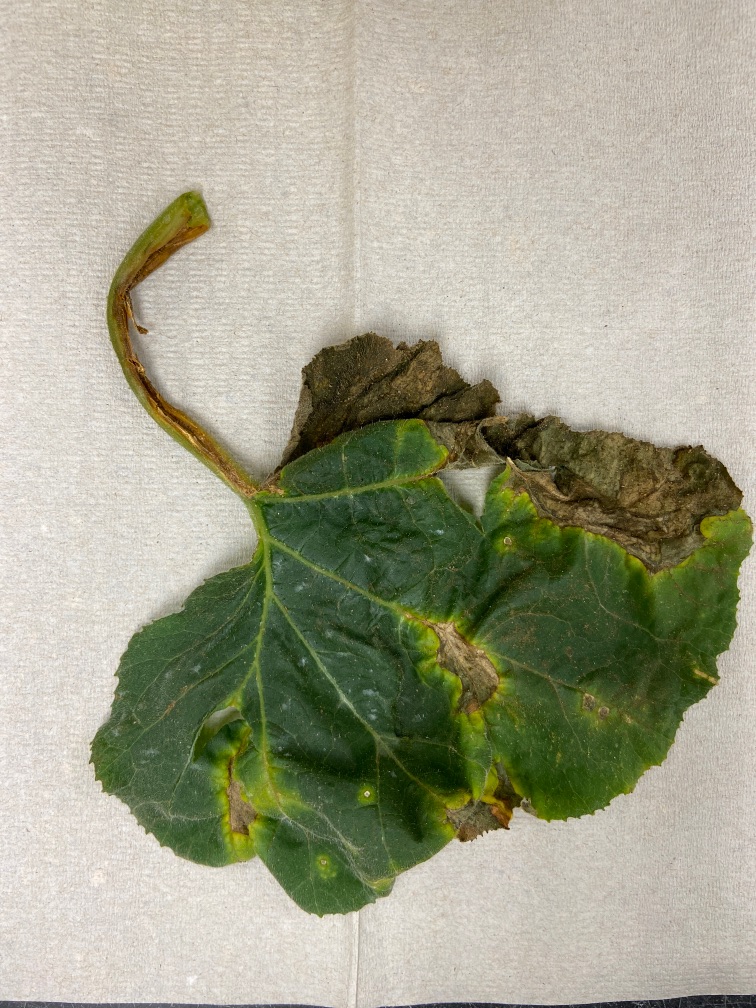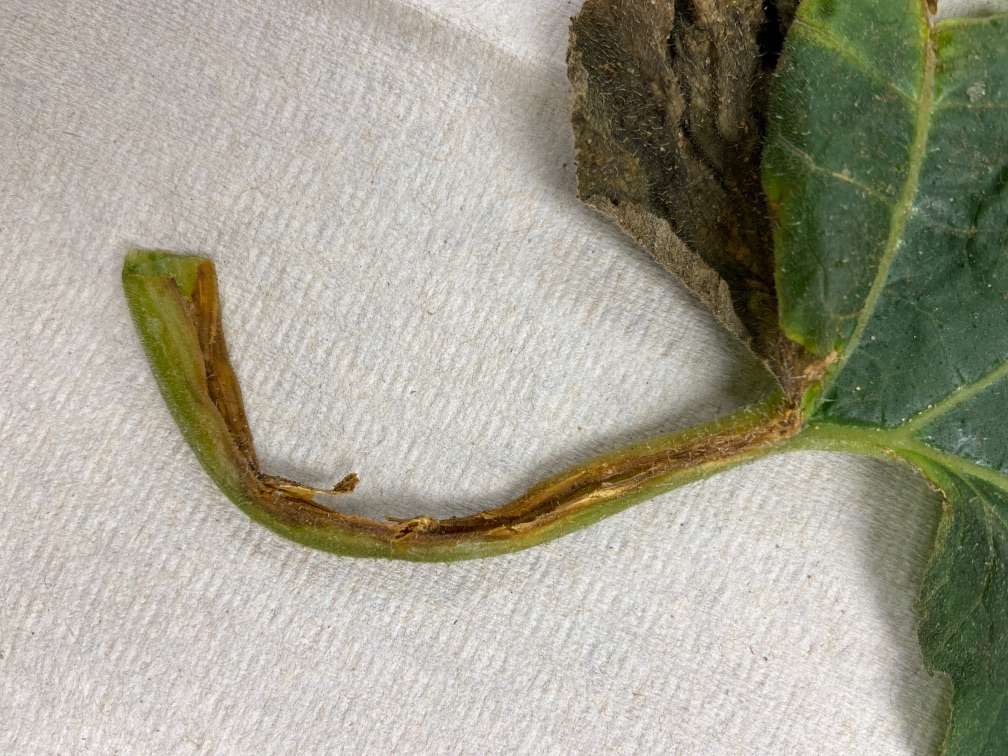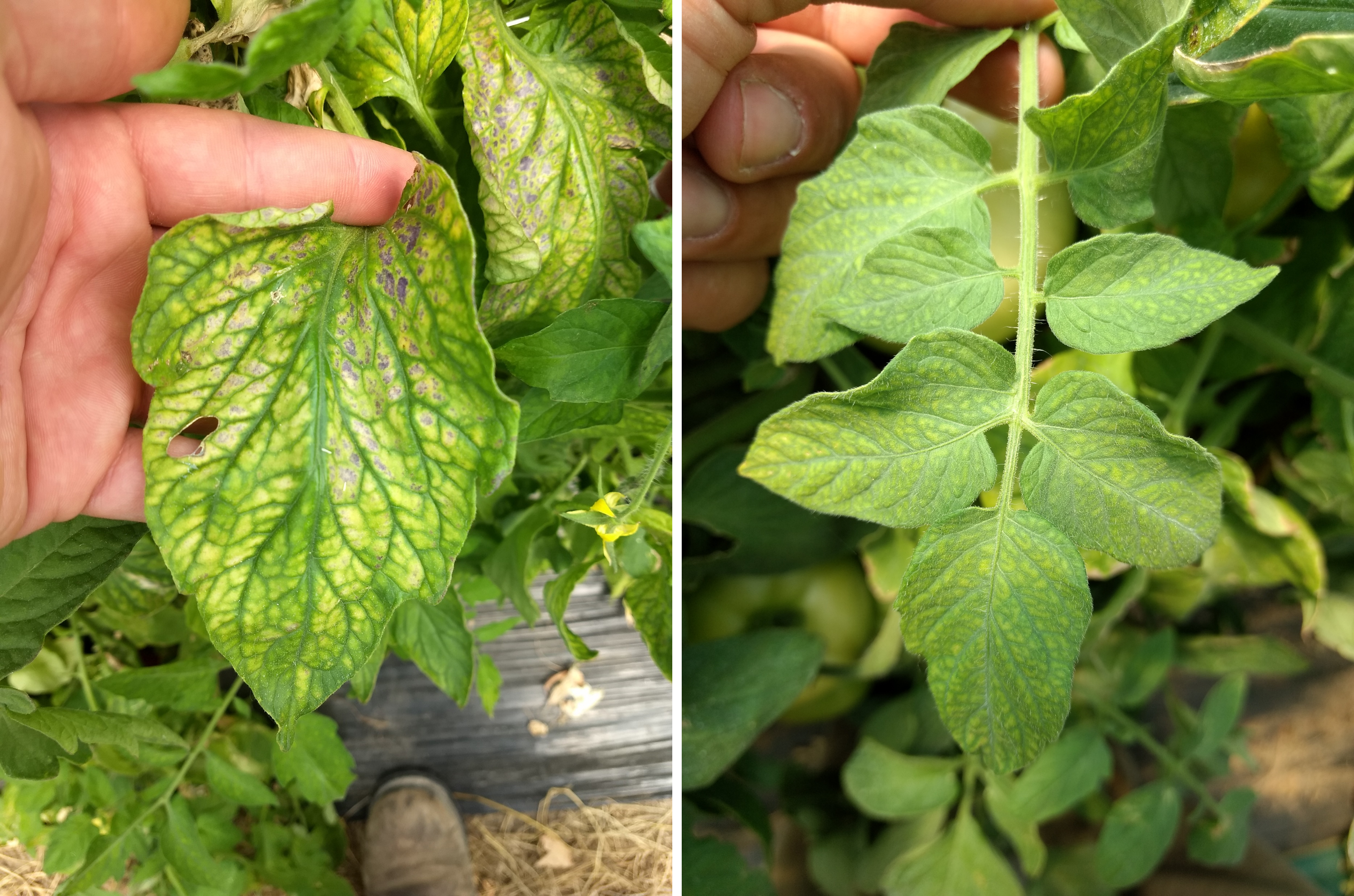Michigan vegetable crop report - July 27, 2022
Much of the Lower Peninsula received a good soaking this week, harvest is strong, and managing key insects and diseases continue.

Weather
Watch Jeff Andresen's weather update here.
Over the weekend, we had the first wide-scale rain event across much of the state in quite some time. But we haven’t seen the last of the hot and dry conditions.
The forecast calls for:
- Variably cloudy and cool Wednesday. Scattered showers possible today through early Thursday, especially north.
- Mostly sunny, dry, and cool Friday through Sunday.
- Mostly fair and warmer early next week.
- Daytime temperatures in the mid-70s to low 80s through Friday, warming back into the 80s by Sunday. Lows in the mid-50s to low 60s through this weekend.
- Scattered showers possible again Monday.
- Medium range guidance calls for a return of warmer and drier than normal weather next week into early August.
- New long lead outlooks also call for warmer and drier than normal weather for the remainder of the summer into the upcoming fall season.
Crop updates
Asparagus
A quick note on “funky” symptoms you may see. The herbicides dicamba and clopyralid may be applied after harvest to help with problem perennials but can create some confusing injury symptoms in the fern. Affected fern may be distinctly “zig-zaggy.” The timing may be confusing, as injury may not be noticed until later in the fern season.
In past years, some growers have experimented with products besides carbaryl for controlling asparagus beetle in the fern. Past work did not detect resistance to carbaryl; it was still effective. But, if you desire to try another product, there are other options from different modes of action: acetamiprid (e.g., Assail), chlorantraniliprole (e.g., Coragen), dimethoate, and spinetoram (e.g., Radiant) have activity against asparagus beetle. Of these, acetamiprid also includes tarnished plant bug and Japanese beetle on the label.
Carrots and celery
Over the last week, with the cooler temperatures, the numbers of aster leafhoppers have stayed moderate, with aster yellows infectivity remaining low across the state. The cooler temperatures also are not conducive for other insects, so while aphids and leaf tiers have been spotted in celery fields in west Michigan during the warmer period, the rain and cooler temperatures have kept their numbers low. Cutworm numbers are rising in traps placed near celery fields, so keep an eye out for those. The early part of August will bring warmer than normal temperatures, therefore it's important to stay vigilant for the upcoming weeks and monitor insect activity.
Cole crops
Degree days suggest the final, late-summer peak of cabbage maggot is a few weeks off (around mid-August), based on weather at the Allegan, Fennville, Hudsonville and Grant Enviroweather stations. Very few, large maggots were present in a trial in Ottawa County, with mostly old damage, supporting the idea that the next “flush of flies” was still upcoming. Keep in mind that being “between peaks” does not mean flies are not active.
Cucurbits/Pickles
Melon harvest picking up more volume. Fresh market cucumber and squash fields are being destroyed for new plantings or cover crops.
Downy mildew was found this week in Muskegon and Allegan counties. Time for the big guns, including:
- Elumin + chlorothalonil or mancozeb
- Omega (Orbus) + chlorothalonil or mancozeb
- *Orondis Opti (chlorothalonil is part of the premix)
- Previcur Flex + chlorothalonil or mancozeb
- *Ranman + chlorothalonil or mancozeb
- Zampro + chlorothalonil or mancozeb
*Across many years of field tests, Orondis Opti and Ranman have been the leading fungicides in cucurbit downy mildew control in Michigan and would be especially recommended given the positive downy mildew air samples detected across the state and the positive disease samples from two counties.
Several calls came in about powdery mildew, because “plants are big, and this is about the time we see it”. Fungicides can wait until there is active, rigorous field scouting reveals the beginning of the disease. Knowing when the pathogen first comes into a production field is important so that a management strategy can be put into place when the pathogen is actually present (not wasting money) and before the problem is out of control (not chasing from behind). Soon, we will feature an updated fungicide recommendation program. You can review last year’s for now.
Heavy rains last weekend mean Phytophthora capsici is going to rear its ugly head on farms living with this disease. One phrase describing what’s next could be “disk the mess, protect the rest.” Promptly disk under areas with symptomatic plants plus a firewall of healthy ones, then focus plant protection on healthy plants.
Phytophthora capsici can present in different ways. Plant death can occur due to root infections; in this case plants in the affected area will wilt and die, and there may not be other above-ground symptoms. It can also occur from water splashing infested soil up onto crowns and petioles. In the case of petiole infections, necrotic areas can appear where inoculum splashed onto plants. Leaf infection can occur this way too. Finally, fruit can become infected from splashing soil, eventually producing water soaked spots with the characteristic not-too-fluffy powdered sugar sporulation. These symptoms can occur one at a time, or all together. Read more here about all things Phytophthora.


What lookalikes can cause plants to die, and how can they be ruled out? Bacterial wilt is vectored by cucumber beetles and can cause plants to wilt. This could be a suspect if you experienced high beetle populations when plants were young. In our experience, growers usually remember this! Squash vine borer can cause plants to wilt, but is usually spotty and creates a characteristic entrance hole in plants (along with a juicy worm inside). There are other wilts, including Fusarium wilt, but confirming these (and bacterial wilt) requires microscope work. Last, consider if the affected field, neighboring fields “upstream” or your farm has a long history of Phytophthora.
Onions/Garlic
Garlic harvest is underway. Time to start sourcing garlic seed for fall.
Sweet onion harvest is underway. Some growers are not happy with size. Two factors contributing to this are likely the drier than normal weather, and the shallow roots of onion plants. Around this time of year we start to see tops falling over as well. This is normal as onions reach a more mature size, and sweet onions are several weeks ahead of seeded onions as they are transplanted. So, what seeded onion growers see a month or two from now, transplanted sweet onion growers see around now. Once tops fall over, onion bulbs continue to grow. They can put on 30% more in size after tops fall over! So, some tip over is not a problem.
Seeded storage onion growers maintain a fungicide program to limit leaf infections that may move to the bulb as the tops dry down. Transplanted sweet onion growers tend to peel the outermost leaves to reveal a shiny bulb on the market table, and their customers are not as concerned with shelf life for this style of onion. So, plant protection is not as critical. This is akin to field corn growers continuing fungicide applications late into the fall for tar spot as kernels dry down. Sweet corn growers just don’t need to worry about that as much.
Onion thrips populations are spotty in west Michigan. Some fields have lower populations, while in some locations numbers are very high (even after the rain last weekend). Scouting can help you make decisions.
Some farms had applied Minecto Pro following Movento. What to use next? If thrips populations are below one per leaf (10 thrips per plant on a 10 leaf plant), consider skipping a week. If thrips pressure is moderate, consider Exirel or Lannate + Warrior. If pressure is high, Radiant is the best choice; it is still the best tool we have for knocking down high populations. If it is needed, it makes sense to use it now to avoid the freight train of exponentially increasing populations.
A few quick notes on resistance management. Onion thrips take about two weeks to complete a generation. A goal of resistance management is to avoid selecting for resistance in more than one generation. That is why the guidelines call for back-to-back (one week and then the next) applications of a mode of action. Also note, Minecto Pro contains the same modes of action as Agri-Mek and Exirel. Learn more about thrips control here.
Fruiting vegetables
Field tomatoes are sizing up and coloring, and with that plants are stressed out. It is easy to find blossom end rot, and both Magnesium (Mg) deficiency and Manganese (Mn) deficiency in plants right now. Magnesium (Mg) deficiency is much more common, and the tell-tale yellow marbling between the veins of the oldest leaves indicate that this mobile nutrient is being moved by the plant from the oldest leaves to the newest growth, like transferring money between accounts. Manganese (Mn) has a similar appearance but only shows up on the newest leaves. This nutrient is immobile in the plant, and so the newest growth doesn’t receive any “transfers” from the older growth. A high pH soil can make manganese (Mn) deficiency more prevalent.

Late blight was found in Ontario tomatoes this week. Regular applications of chlorothalonil (Bravo) is a good and cheap way to prevent plants from getting this highly impactful disease.
Bacterial canker is starting to show up in tomatoes on farms with a history of the disease. Lots of good pictures can be viewed from Meg McGrath, at the Cornell Vegetable Pathology lab. This pesky disease is truly madenning, and management relies on rotation and sanitation with extreme prejudice.
Sweet Corn
Sweet corn harvest is picking up on more farms across the region. Light earworm pressure on harvested ears has been reported, which matches what we are finding in traps (not much, but some). Insectforecast.com reports little risk of additional earworm migration through this weekend, however it’s worth checking traps as there were supportive weather patterns on July 22 and July 23. Field corn is also tasseling across the state right now, which is currently serving as a broad-scale attractant for female moths to lay eggs and an all-you-can-eat buffet for the caterpillars.
What to use for corn earworm? Trap captures can help guide you. Past work at Ohio State University suggested that pyrethroids can be effective when trap catches are low, check out this helpful article. There are a wide variety labeled, including old standbys like Warrior II, Brigade, Baythroid, Mustang Maxx, Hero and their generics. These can provide affordable control when pressure is not high. When trap captures are higher, products containing the active ingredients chlorantraniliprole or spinetoram are helpful. There are both one-active versions of these (e.g., Coragen and Vantacor for chlorantraniliprole, Radiant for spinetoram) as well as pre-mixes with pyrethroids (e.g., Besiege, Elevest) or other insecticides (e.g., Intrepid Edge). Check pricing, check traps, spray, and hope for the best!
Events
- Aug. 4: Potato Field Day from 8 a.m. to 3 p.m. at the Montcalm Research Center. The center is located at 4629 W. McBride Road in Lakeview. Presentation topics include sustainability, irrigation and potato storage management.
- Aug. 10: Turf Field Day at the on-campus Hancock Turfgrass Research Center. The center is located at 4444 Farm Lane in Lansing.
- Aug. 11: Field Day and Pasture Walk at the Lake City Research Center. The center is located at 5401 W. Jennings Road in Lake City and works primarily in livestock management.
- Aug. 23: Plant Diagnostic Day at the Saginaw Valley Research and Extension Center. The center is located at 3775 S. Reese Road in Frankenmuth.
- Aug. 24: Blueberry field day at the Trevor Nichols Research Center. The center is located at 6237 124th Ave. in Fennville, Michigan.
- Aug. 25: 2022 Tile Drainage Field Day at 13000 Bird Lake Rd, Camden, MI.
- Sept. 8: Field Day at the Northwest Michigan Horticulture Research Center. The center is located at 6686 S. Center Highway in Traverse City and will highlight Michigan fruit advancements.
- Sept. 14: Mechanical Weed Control Field Day at the Southwest Michigan Research and Extension Center. The center is located at 1791 Hillandale Road in Benton Harbor.
This work is supported by the Crop Protection and Pest Management Program [grant no 2021-70006-35450] from the USDA National Institute of Food and Agriculture.



 Print
Print Email
Email




